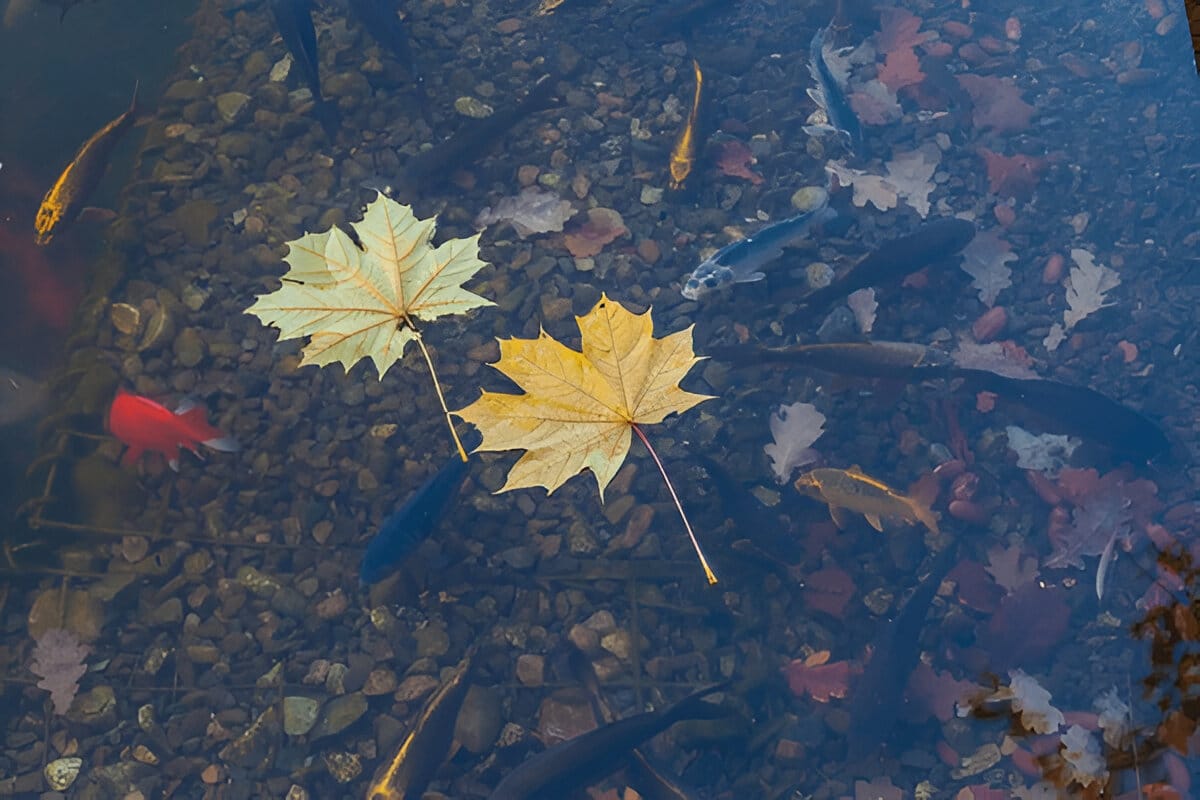
Top Fish Species for Your Pond: Choosing the Right One
Choosing the right fish for your pond is more than just picking the ones you like. Each species has different needs, and your pond has
Invasive aquatic weeds are plants that don’t belong in Canadian lakes and ponds. These weeds grow fast, taking over the water and harming native plants and animals. Two of the most common invasive weeds are Eurasian watermilfoil and hydrilla. Knowing how to spot these weeds early helps keep lakes healthy and clean.
Invasive weeds create significant problems for lakes, affecting the environment and local communities. They spread rapidly, taking over spaces that native plants need. This loss of native plants can hurt fish populations by destroying their habitats. People also struggle to enjoy lakes for swimming, boating, and fishing when invasive weeds cover the water. The following are 2 common Aquatic weeds in Canada.
Eurasian watermilfoil grows quickly underwater. It has long, thin stems with leaves that look like feathers. The leaves grow in groups of four or five around the stem. Each leaf has at least 12 tiny leaflets. When removed from water, these leaves become floppy and lie flat against the stem.
This weed forms thick mats on the water’s surface, blocking sunlight. Without sunlight, native plants can’t grow. Fish and other water animals also lose their homes. Eurasian watermilfoil spreads easily because small fragments break off and grow into new plants.
If you see this weed, you can use tools like an aquatic weed blower to clear small mats from around docks or swimming areas.
Hydrilla was first found in Ontario in late 2024. It grows fast, up to 2.5 centimeters a day, and can quickly take over lakes. Hydrilla has small leaves growing around the stem in groups of three to eight, usually five. These leaves have tiny saw-like edges. Unlike many native plants, hydrilla has small tubers on the lake bottom that help it survive and spread.
Hydrilla creates thick mats, too, causing problems for boating, fishing, and swimming. It can also make water unsafe by reducing oxygen and encouraging harmful algae. Hydrilla mats can be so thick that they clog boat engines and block waterways completely.
Using a tool like the weed roller for lakes can help remove hydrilla from shallow areas along the shoreline.
Watch out for these signs that invasive weeds might be growing:
If you spot these signs, it’s time to take action.
Regularly check your lake or pond for invasive weeds. Early detection is the best way to stop the weeds from spreading further. Small infestations can be handled using simple tools. For light surface weeds, use an aquatic weed blower. This tool helps clear debris and smaller weed mats, keeping swimming areas and docks clear.
For weeds in shallow water near your shoreline, use a weed roller. The weed roller gently presses down weeds, pulling them from the roots and making removal easier.
Mechanical removal methods, like hand pulling or using specialized weed harvesters, can also be effective for larger areas. Chemical treatments are sometimes necessary but should be used carefully and as directed by professionals to prevent harming native wildlife.
Preventing invasive weeds is easier than removing them once they’ve established themselves. Here are some tips to help prevent weed spread:
For more ideas, read our blog post about removing weeds and debris from the lakefront. This guide gives practical DIY approaches for shoreline cleanup.
You can also learn about more detailed methods by checking our article on 8 tools and methods for weed control in ponds and lakes. This resource helps you choose the right tools and methods based on your lake’s needs.
If you see invasive weeds, note the location, take pictures, and report them to local authorities or invasive species councils. Accurate reports help experts respond quickly, stopping invasive weeds from spreading further.
Government agencies and conservation groups often provide resources and assistance in managing invasive weeds. Check with your local environmental authorities for support and guidance on best practices in weed control.
Managing invasive weeds effectively requires cooperation from everyone who enjoys lakes and ponds. By working together, communities can successfully protect their local waterways from invasive plants. Regular community cleanups, educational programs, and clear communication help keep everyone informed and motivated.
Identifying invasive aquatic weeds early and managing them properly is essential for protecting Canadian lakes and ponds. Eurasian watermilfoil and hydrilla are especially concerning because of their rapid growth and harmful effects. Using proper tools, like weed blowers and rollers, along with preventative measures and community action, helps maintain healthy and enjoyable lakes and ponds for everyone.
Take action now and contribute to keeping your local waters clean and safez

Choosing the right fish for your pond is more than just picking the ones you like. Each species has different needs, and your pond has

If your pond water has turned green or is starting to develop stringy mats on the surface, you’re likely dealing with algae. For Canadian pond

If your backyard pond in Canada is turning green or developing stringy messes on the surface, algae is likely the reason. Algae blooms are common,

Accidentally, when you looked at your pond and thought, “Why does the water look so off lately?” Maybe it’s starting to turn murky, algae are

Pond dye is a widely used tool for improving the appearance and health of ponds, but is it safe? This article dives into the safety